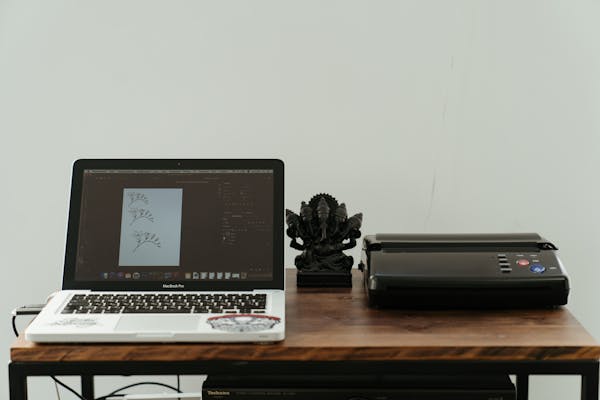Table of Contents
With the Tokyo 2020 Olympics well underway, a flurry of recent news announcements has shined a light on how 3D printing has contributed to the games. The most recent of these is from metal and carbon fiber 3D printer manufacturer Markforged, whose 3D printing technology has been used to revolutionize adaptive equipment for para-athletes.
Markforged’s continuous carbon fiber 3D printing technology has been leveraged for the production of prototype components for a tandem cycle drivetrain, and to optimize weight to stiffness ratios for handbikes and race wheelchairs.
A busy year for Markforged
Having wrapped up its merger with Special Purpose Acquisition Company (SPAC) one earlier this year, in a deal that valued the combined firm at $2.1 billion, Markforged listed its shares on the NYSE under the ticker symbol ‘MKFG’ earlier this month. In June, the company announced three new additions to its cloud-based Digital Forge Platform, including two new 3D printers and a software update.
The new Metal X Gen 2 3D printer is intended to succeed Markforged’s original Metal X system, while the new X7 Field Edition 3D printer is designed as a ruggedized, field-deployable version of the firm’s X7 composite 3D printer. Additionally, the ‘Next Day Metal’ software update is engineered to enable print speeds up to twice as fast as what was previously possible.
This year, the company’s 3D printing systems have aided engineers from NASA’s Jet Propulsion Laboratory, MIT, Caltech, KAIST, and the Luleå University of Technology take on the Defence Advanced Research Projects Agency’s (DARPA) Subterranean Challenge. Markforged’s 3D printers have enabled the team to apply quick iterations and fixes to their autonomous robots at the point of need, which are designed to traverse underground environments such as caves during planetary explorations.
Additionally, the company announced plans to set up a service dedicated to producing food-contact components in Australia with the goal of minimizing machine downtime, modifying heritage tooling, fixtures, and actuators, and optimizing performance.

Revolutionizing competition for para-athletes
The latest update from Markforged details how its 3D printing systems have been leveraged to empower the mobility of para-athletes in lead up to this year’s Tokyo Paralympic Games. While the mobility requirements of each para-athlete differ substantially, many of them rely on adaptive equipment to compete. However, adaptive equipment can be accompanied by a high price tag due to the customization needed to ensure it meets the individual requirements of each athlete.
Markforged’s Stockholm-based partner, 3D Verkstan, has been helping to support local para-athletes with their customized equipment. The firm has been designing, 3D printing, and testing prototype parts for a tandem cycle drivetrain for a blind cyclist and her sighted race pilot.
With some custom parts for the tandem costing up to £3,000, the firm sought to keep costs down by 3D printing prototype components that work alongside standard Shimano parts to modify the tandem’s drivetrain. Markforged’s iterative 3D printing process combined metal with carbon fiber to create a strong, lightweight crack set that the athletes could test, tweak and build during qualifying races.
Going forward, the team hopes to strike the right balance between weight and strength to print the final, race-ready part that is capable of withstanding the demands of competition.
Elsewhere, British champion para-triathlete and former marine commando, Joe Townsend, is using a Markforged 3D printer to design and produce his own bespoke adaptive parts. With competing in hand cycling and wheelchair racing using equipment not custom-designed for his body taking its toll, Townsend turned to 3D printing to create bespoke parts for himself and other athletes.
Getting the weight to strength ratio for parts right is essential within elite level competition, and after experimenting with thermoplastic Townsend sought out a stronger, lighter material for his adaptive equipment. Markforged’s UK partner, SolidPrint 3D, introduced Townsend to continuous carbon fiber printing, which offered superior strength and durability compared to that of thermoplastics, while also retaining the flexibility that stiff plastics can not.
Since purchasing a Markforged 3D printer, Townsend has designed a custom crankarm for his handbike that is strong enough to withstand the rigors of competition and has also produced an array of custom gloves for wheelchair racing. The gloves are designed to provide the best ergonomic support and grip for his hand.
Townsend has gone on to found JT Custom Adaptive, which deploys 3D printing to design bespoke hand grip parts for other para-athletes at a lower price point than is otherwise available. Townsend is already shipping his products worldwide and hopes to expand his custom equipment offering in the future.
According to Markforged, these case studies demonstrate how 3D printing can support mobility and inclusion within sport by making bespoke modifications and custom equipment more accessible and cost-effective. Advances in 3D printing technologies and materials will continue to provide further opportunities to improve and optimize custom adaptive equipment not only for para-athletes but also for anyone seeking improved accessibility and freedom of movement.

3D printing’s contribution to Tokyo 2020
With the Tokyo 2020 Olympics in full swing, a new generation of athletes have turned to 3D printing in order to gain competitive advantages regarding optimized performance, aerodynamics, and time and weight savings.
Over the past week or so, a number of 3D printing firms have revealed the role their technology has played in the design and development of equipment, clothing, and accessories currently on display at the games.
For instance, a Calibry 3D scanner from Russian handheld 3D scanner developer Thor3D has been used by the Italian national cycling team to streamline their riders’ aerodynamics, while sports performance brand Vorteq has turned to fellow 3D scanner manufacturer Artec 3D to create custom-fitted aerodynamic skinsuits for cyclists from five different Olympic teams.
Prior to the games, global engineering firm Renishaw worked with Lotus Engineering and Hope Technology to design a new track bike for the Great Britain Cycling Team. The partners 3D printed end-use parts for the bike that are lightweight and innovative in design in order to improve track performance.
Additionally, several athletes are tipped to be wearing Adidas’ 3D printing-optimized next-gen running shoe, the Futurecraft STRUNG, complete with an upgraded 4DFWD midsole, at this year’s games, while highly-customized 3D printed pistol grips produced by Athletics 3D can be seen fitted to the pistol of multiple world shooting champion Céline Goberville.

Nominations for the 2021 3D Printing Industry Awards are now open, have your say who is leading the industry now.
Subscribe to the 3D Printing Industry newsletter for the latest news in additive manufacturing. You can also stay connected by following us on Twitter and liking us on Facebook.
Looking for a career in additive manufacturing? Visit 3D Printing Jobs for a selection of roles in the industry.
Subscribe to our YouTube channel for the latest 3D printing video shorts, reviews, and webinar replays.
Featured image shows the customized crankarm Townsend printed for his handbike. Photo via Markforged.







